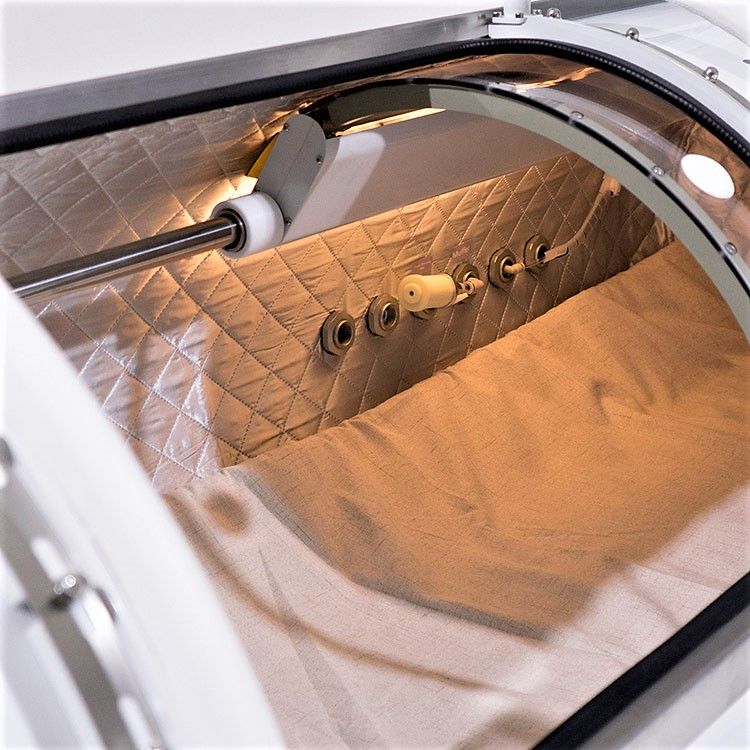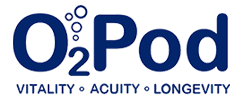Why Justin Bieber Sleeps in a Hyperbaric Oxygen Chamber?
Pop singer, Justin Bieber says that he uses a hyperbaric oxygen chamber and gets IV infusions in order to rid his body of toxins “built-up” after several years of drug abuse: “I’ve abused my body in the past and now I’m just in the recovery process trying to make sure I’m taking care of my body and taking care of the vessel that God’s given me.”
Bieber has at least two hyperbaric chambers, one at home and the other at his studio. He explains: “It fills up with oxygen, I really have been struggling with a lot of anxiety. You get more oxygen to your brain so it decreases your stress levels. It’s pretty cool.”
Bieber also takes antidepressants for depression and anxiety. The medications help him “get outta bed in the morning.” The IV infusions he receives are NAD+ (nicotinamide adenine dinucleotide) infusions to increase his energy level (perhaps the subject of another column in the near future).

Hyperbaric Oxygen Therapy
Hyperbaric oxygen therapy (HBOT) involves breathing oxygen in a pressurized chamber in which the atmospheric pressure is raised up to three times higher than normal. HBOT can be used as a primary treatment or as an adjuvant to surgical and/or pharmacologic interventions.
Note that HBOT is not topical oxygen therapy, sometimes called normobaric oxygen therapy (NBOT). NBOT is the type of oxygen commonly used in hospitals and clinics for patients with lung or heart disease, perioperatively, or for a variety of other medical conditions. A gas mixture with a prescribed percentage of oxygen is given by nasal prongs, face mask, or intubation tube. Adjustments to the oxygen content are based on the clinical response. The oxygen is delivered at normal/ambient air pressure.
Henry’s Law says that the amount of molecular oxygen (O2) dissolved in a solution (blood and/or tissue) is directly proportional to its partial pressure. Using hyperbaric conditions greatly increases the amount of oxygen available. For example, at sea level, the plasma oxygen concentration is 3 mL/L. If you increase the pressure to 3 atmospheres, dissolved oxygen approaches 60 ml/L of O2. This is approximately the amount of O2 needed to supply the resting oxygen requirement of many tissues, even without the contribution of oxygen carried by hemoglobin.
The Undersea & Hyperbaric Medical Society (UHMS) defines hyperbaric oxygen as “an intervention in which an individual breathes near 100% oxygen intermittently while inside a hyperbaric chamber that is pressurized to greater than sea level pressure (1 atmosphere absolute, or ATA). For clinical purposes, the pressure must equal or exceed 1.4 ATA while breathing near 100% oxygen.”
HBOT is given in two settings: monoplace or Multiple. A monoplace chamber holds a single patient and the entire chamber is pressurized with 100% oxygen. The patient directly breathes the chamber oxygen. This type of chamber is most appropriate for clinically stable patients with chronic medical conditions. Multiple chambers can hold two or more people. It is pressurized with compressed air while patients breathe 100% oxygen via masks, head hoods, or endotracheal tubes. This allows for closer monitoring of critically ill patients.
After a review of the available scientific evidence, the UHMS published the document Hyperbaric Oxygen Therapy Recommendations (13th Edition) with 14 documented indications for HBOT. They include:
1. Air or gas embolism.
2. Carbon monoxide poisoning.
3. Clostridial myositis and myonecrosis (Gas Gangrene).
4. Crush injury, compartment syndrome and other acute traumatic ischemias.
5. Decompression sickness.
6. Arterial insufficiencies.
7. Severe anemia.
8. Intracranial abscess.
9. Necrotizing soft tissue infections.
10. Osteomyelitis (refractory).
11. Delayed radiation injury (soft tissue and bony necrosis).
12. Compromised grafts and flaps.
13. Acute thermal burn injury.
14. Idiopathic sudden sensorineural hearing loss.
Air embolism, carbon monoxide poisoning, and decompression sickness (commonly known as “the bends”) are indications for HBOT as a primary treatment. Decompression sickness is a condition caused by a rapid decrease in the pressure that surrounds you, of either air or water. It most commonly occurs in scuba or deep-sea divers but can also occur in high altitude or unpressurized air travel. The compressed air divers use contains both oxygen and nitrogen. As you dive deeper, the amount of oxygen and nitrogen in the blood increases as the pressure increases. The oxygen is used by the body, but the extra nitrogen remains in the blood. If you come up to the surface too quickly, the rapid decrease in pressure causes the nitrogen to come out of the blood and form bubbles in the tissues. These bubbles can cause severe joint and bone pain associated with the condition.
Boyles’ Law states that the volume of a gas is inversely proportional to the pressure exerted on it. Using HBOT in decompression sickness significantly decreases the volume of the nitrogen bubbles and increases the amount of oxygen that can be metabolized by the tissues. A similar thing occurs when HBOT is used in the treatment of an air embolus.
Carbon monoxide (CO) poisoning is another example of HBOT used as a primary treatment. Carbon monoxide binds to hemoglobin much more strongly than to oxygen. The presence of high levels of CO in the blood leads to a marked decrease in oxygen-carrying ability and oxygen release to the tissues. HBOT brings higher oxygen levels to the blood and significantly decreases the half-life of carboxyhemoglobin.
HBOT can also be used as adjuvant therapy in the treatment of several disorders. A review by Leach et al. lists some of the cellular and biochemical benefits of hyperbaric oxygen:
- Promotes angiogenesis and wound healing.
- Kills certain anaerobes.
- Prevents growth of species such as pseudomonas.
- Prevents production of clostridial alpha-toxin.
- Restores neutrophil-mediated bacterial killing in previously hypoxic tissues.
- Reduces leucocyte adhesion in reperfusion injury, preventing release of proteases and free radicals which cause vasoconstriction and cellular damage
These properties have led to the use of HBOT as an adjuvant in promoting wound healing in situations with poorly vascularized tissue, in necrotizing infections and osteomyelitis and acute thermal burns.
But any search of the internet will find page after page of HBOT being promoted for use in a multitude of conditions for which scientific evidence of efficacy is lacking. The FDA (which approves HBOT equipment) is concerned that some claims made by treatment centers using HBOT may give consumers a wrong impression that could ultimately endanger their health.
An FDA article called Hyperbaric Oxygen: Don’t Be Misled warns, “Patients may be unaware that the safety and effectiveness of HBOT have not been established for these diseases and conditions, including HIV/AIDS, Alzheimer’s disease, asthma, Bell’s palsy, brain injuries, cerebral palsy, depression, heart disease, hepatitis, migraines, multiple sclerosis, Parkinson’s disease, spinal cord injuries, sports injuries, and stroke.”
What are the Risks of HBOT?
Patients receiving HBOT are at risk of suffering an injury that can be mild (such as sinus pain, ear pressure, painful joints) or serious (such as paralysis, air embolism). Since hyperbaric chambers are oxygen-rich environments, there is also a risk of fire.
The only absolute contraindication to HBOT is untreated pneumothorax. Relative contraindications include obstructive lung disease (increased oxygen may decrease respiratory drive in these patients), sinus infection or recent ear or thoracic surgery.
A few studies have been done or are underway to evaluate whether HBOT has any effect on patients with depression, Parkinson’s disease, autism spectrum, traumatic brain injury, and fibromyalgia, but results have been mixed, and FDA has determined that there is not enough evidence to recommend HBOT for these disorders at this time.
Clinical trials can be found in clinical trials. gov.
Michele R. Berman, MD, and Mark S. Boguski, MD, Ph.D., are a wife and husband team of physicians who have trained and taught at some of the top medical schools in the country, including Harvard, Johns Hopkins, and Washington University in St. Louis. Their mission is both a journalistic and educational one: to report on common diseases affecting uncommon people and summarize the evidence-based medicine behind the headlines.
